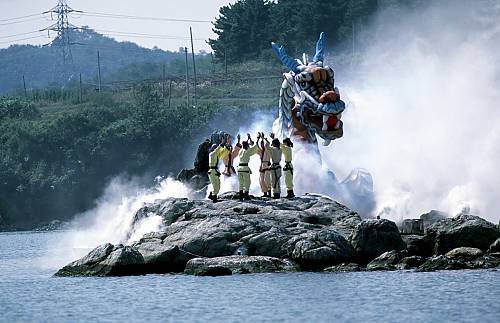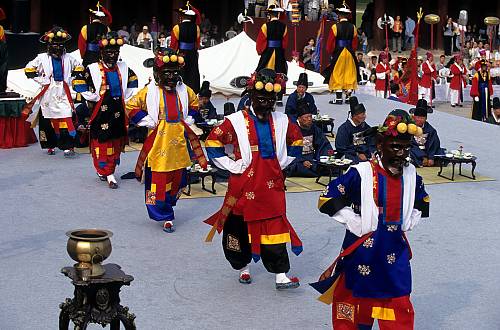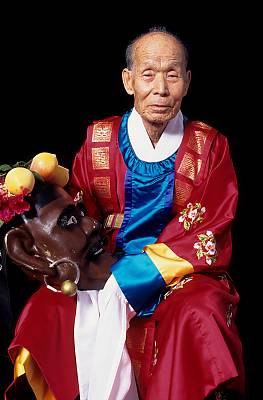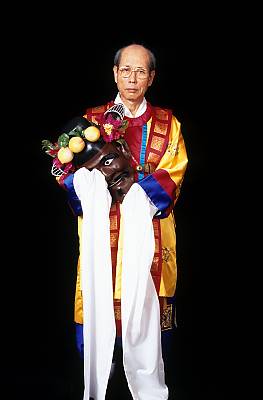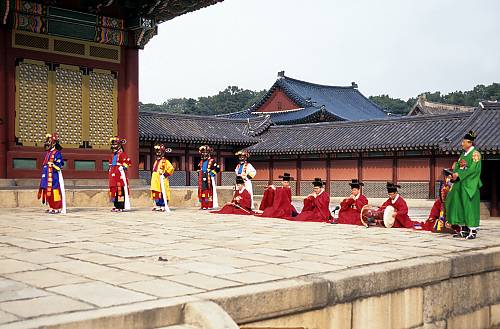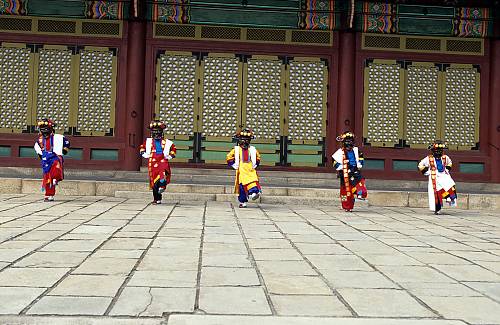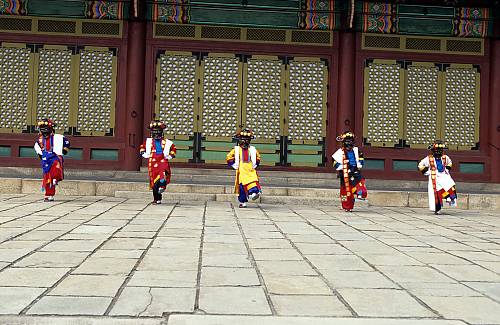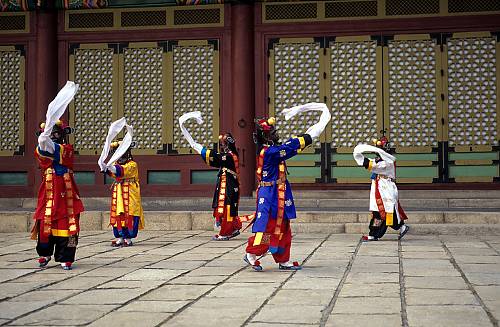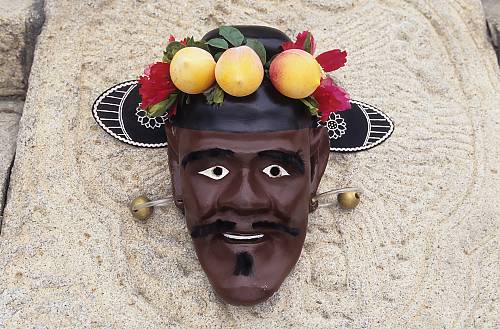Cheoyongmu
Inscribed in 2009 (4.COM) on the Representative List of the Intangible Cultural Heritage of Humanity

Cheoyongmu is a court dance today performed on stage but formerly used to dispel evil spirits and pray for tranquillity at royal banquets or during exorcism rites on New Year’s Eve to promote good fortune. Based on the Korean legend of Cheoyong, a son of the dragon king Yongwang, who took human form and saved his human wife from the smallpox spirit through singing and dancing, the dance is performed by five men clad in white, blue, black, red and yellow to represent the four cardinal directions and the centre. They wear the light wine-coloured mask of the man-god, with white teeth, tin earrings with a necklace of lead beads, and a black hat decorated with two peony blossoms and seven peaches to ward off evil and invite auspicious energy. The dancers move with stateliness and vigour through a variety of styles and tempos of music, punctuated by various lyrical song recitations. Part of a greater folk mythology surrounding Cheoyong, including the belief that his image carved on the gate of a house would repel smallpox and other ills, Cheoyongmu also embodies the philosophy of Confucianism, particularly the Theory of the Five Elements. The creation of the Cheoyong masks also provides a valuable opportunity for traditional craftsmanship.

